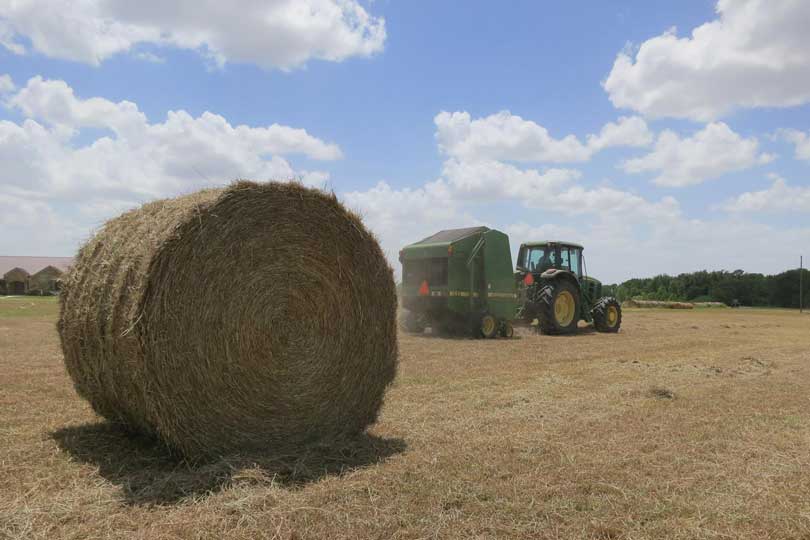Green, yellow or brown. What color is your hay? Dr. Bob Judd, host of Texas Vet News on the Texas Farm Bureau (TFB) Radio Network, reports the color of your hay can tell you a lot about its quality.
“The most desirable color is bright green. Green hay suggests the hay was not subjected to any adverse conditions during curing or storage, and most likely the hay is nutritious and free of molds,” Judd said.
In most cases, green hay has a large amount of keratins, which is a precursor to vitamins A and E.
On the other hand, if the hay has a yellow coloration, it may have been over mature when harvested or could have been rained on in the field before baling.
“Hay that is rained on will have leeching of nutrients and could be moldy, which can cause respiratory and GI symptoms in your horses,” Judd said.
Yellow hay can also be due to sun bleaching, which occurs when hay is stored in the full sun.
“Since this occurs just on the outside of the bale, the hay inside may be okay, but it is just a waste of hay,” he said.
If you have brown hay, this is likely due to excessive moisture and fungal growth. This hay should not be fed as it can cause health problems in your horses.
The color of hay may tell you a lot, but it cannot tell you everything.
“I would certainly recommend having your hay analyzed at a lab. However, the color does tell us something about the hay,” Judd said.
Kentucky Equine Research indicates all hay should be cured correctly to less than 20 percent moisture. If baled too wet, mold and heat will develop in the middle of the bale and can even start a fire.
If hay is baled too dry, it may lose part of its nutritional value due to loss of broken or fallen leaves.
Hay that has been rained on may have fewer nutrients, especially vitamins A and E, due to leeching. Some carbohydrates may also be reduced.

